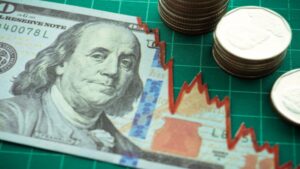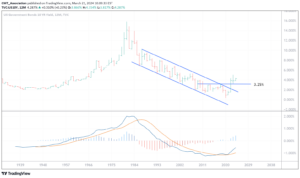By C. Theodore Hicks II, CFP®, CKA®, CMT®
1/ Due for a Pause or Pullback
2/ Breadth Measures Have Improved
3/ A Picture of a Healthy Bull Market
4/ Percent of Stocks at Highs
5/ The Most Extended
Investopedia is partnering with CMT Association on this newsletter. The contents of this newsletter are for informational and educational purposes only, however, and do not constitute investing advice. The guest authors, which may sell research to investors, and may trade or hold positions in securities mentioned herein do not represent the views of CMT Association or Investopedia. Please consult a financial advisor for investment recommendations and services.
1/ Due For a Pause or Pullback


At the beginning of each week, our investment committee steps back and examines the big picture. This is what we refer to as our “Macro View”. In other words, we want to step back and examine the broader landscape before we start debating any portfolio changes in the week ahead.
Our first chart today is the weekly chart for the S&P 500; every candle represents a week. In examining the right side of the chart, where we all live, we very quickly see that the broad market has experienced a seven-week rally. While the rate of ascent slowed in weeks five and six, we have seen neither a pause nor a pullback over this seven-week time period.
If we examine the rest of the chart, we can see that it seems uncommon for such an extended period of white candles (representing upward moves) without any black candles (representing downward moves). As a result, simple logic tells us that we might be due for a pullback in the broader market. A look at the 14-period RSI confirms that the broad market is approaching overbought readings on this weekly chart. (If we were to examine a daily chart, and that 14-period RSI, we would see a reading of 78.19. A very overbought reading.)
2/ Breadth Measures Have Improved


If you have been reading market commentary regularly this year, you have no doubt read about The Magnificent 7. Ultimately, while the S&P 500 has had a great year, the reality is – due to how the index’s returns are calculated – there has not been broad participation in this year’s run.
This brings us to our next chart.
Chart 2 is a daily chart for the Russell 3000. While this index ETF is also cap-weighted, meaning the performance of the few can still have an outsized influence on the index’s return, we use the Russell 3000 to help us measure the breadth of the overall market. In a nutshell, the term breadth basically refers to how many of the stocks are participating. Is it just a few, like The Magnificent 7? Or are the majority of stocks advancing? (You can read more about breadth in this Investopedia article found here.)
At the bottom of our chart, we are showing the percentage of the Russell 3000 that are trading above their respective 20, 50 and 200-day simple moving averages. In particular, note the percentage of stocks trading above their 200-day moving average. The 200-day moving average is generally considered the demarcation between an uptrend or a downtrend. Therefore, if we are in a healthy bull-market we should see a high percentage of stocks trading above their 200-day moving averages. Here, on the right side of the chart, we see that we have witnessed a strong rally in the percentage of stocks trading above this line.
We now see more than 71% of the Russell 3000 in an uptrend. That is a healthy figure. However, this, by itself, does not indicate that we are in a healthy bull market.
Before moving on to our next chart, take a look at how these breadth measures have oscillated above and below the 50% level (black horizontal line). This is why many have stated that 2023 was not a strong healthy bull market.
But how does a strong healthy bull market look?
3/ A Picture of a Healthy Bull Market


This is how a strong bull market looks.
Chart 3 shows the same Russell 3000 daily chart, but instead we are examining most of 2016 and all of 2017. In particular, note that the percentage of stocks trading above their 200-day moving averages did not cross below the 50% level during this time period. Yes there were periods where the percent of stocks trading above their 20 and 50-day moving averages dropped below the 50% level, but not the 200-day moving average. This is indicative of a healthy bull market. There were periods of short term pressure, but the long-term trend remained up.
As a result, while we are encouraged that the current environment (Chart 2) is showing such a strong percentage of stocks now in an uptrend, since this measurement has been oscillating back and forth all year, we are only cautiously optimistic.
4/ Percent of Stocks at Highs


Chart 4 again uses the Russell 3000. This time we are using it to help us examine what percentage of its constituents are trading at their 3, 6 and 12-month highs. One of these days, we will get around to programming a chart to show us what percentage of stocks are trading within 5% of their 3, 6 and 12-month highs. For now, we will use this metric which shows the percentage trading at these highs. The problem is that this metric, as displayed, does not give grace for stocks that were at these levels a day or two ago, but have come off a point or two. Even with this deficiency, we can see a strong positive trend. More and more stocks are trading at their highs.
A strong positively trending stock market will obviously have stocks that are trading at their highs as they make new highs. That is the only way stocks make great gains – by making new highs.
5/ The Most Extended


In an attempt to put all of this together as we close, here we are showing one of our watchlists. This particular watchlist is the equal-weight sector ETFs. Many sector and sub-sector ETFs are cap-weighted. (See this Investopedia article, 3 Types of Indexing for ETF Success, to learn about some of the differences, along with the pros and cons, of cap-weighted versus equal-weighted ETFs.)
We have shown that the broad market has experienced a seven-week rally (Chart 1). As a result, we could see a pause or a pullback in the week ahead.
However, we have also shown that there is some evidence (Charts 2 and 4) to suggest that the rally we have been experiencing is a healthy one in that there has been broad participation. In other words, it is not just The Magnificent 7 that have been advancing these last several weeks.
As a result, our final analysis for today is to try to determine where we could see that pullback, should such a pullback develop.
On the right of the watchlist, you will see a column labeled “% from 200MA”. This column is showing us how far above or below the particular ETF is from its own 200 day simple moving average. With this data, we see that the equal-weight technology sector ETF is the farthest above its 200 day moving average. Said differently, the tech sector is the most extended. As a result, if we see a market pullback in the coming week, we could see that pullback somewhat concentrated in the tech sector since it has moved the furthest from its moving averages. As a result, if you need to take some gains off the table, you might consider looking at your tech related positions to see if they are the most extended. Conversely, if you are still a bit heavy in cash, and if we do see a pullback in this sector, you can use the pullback as an opportunity to buy on the recovery.
—
Originally posted 18th December 2023
Disclosure: Investopedia
Investopedia.com: The comments, opinions and analyses expressed herein are for informational purposes only and should not be considered individual investment advice or recommendations to invest in any security or to adopt any investment strategy. While we believe the information provided herein is reliable, we do not warrant its accuracy or completeness. The views and strategies described on our content may not be suitable for all investors. Because market and economic conditions are subject to rapid change, all comments, opinions and analyses contained within our content are rendered as of the date of the posting and may change without notice. The material is not intended as a complete analysis of every material fact regarding any country, region, market, industry, investment or strategy. This information is intended for US residents only.
Disclosure: Interactive Brokers
Information posted on IBKR Campus that is provided by third-parties does NOT constitute a recommendation that you should contract for the services of that third party. Third-party participants who contribute to IBKR Campus are independent of Interactive Brokers and Interactive Brokers does not make any representations or warranties concerning the services offered, their past or future performance, or the accuracy of the information provided by the third party. Past performance is no guarantee of future results.
This material is from Investopedia and is being posted with its permission. The views expressed in this material are solely those of the author and/or Investopedia and Interactive Brokers is not endorsing or recommending any investment or trading discussed in the material. This material is not and should not be construed as an offer to buy or sell any security. It should not be construed as research or investment advice or a recommendation to buy, sell or hold any security or commodity. This material does not and is not intended to take into account the particular financial conditions, investment objectives or requirements of individual customers. Before acting on this material, you should consider whether it is suitable for your particular circumstances and, as necessary, seek professional advice.
Disclosure: ETFs
Any discussion or mention of an ETF is not to be construed as recommendation, promotion or solicitation. All investors should review and consider associated investment risks, charges and expenses of the investment company or fund prior to investing. Before acting on this material, you should consider whether it is suitable for your particular circumstances and, as necessary, seek professional advice.


































Join The Conversation
If you have a general question, it may already be covered in our FAQs. If you have an account-specific question or concern, please reach out to Client Services.